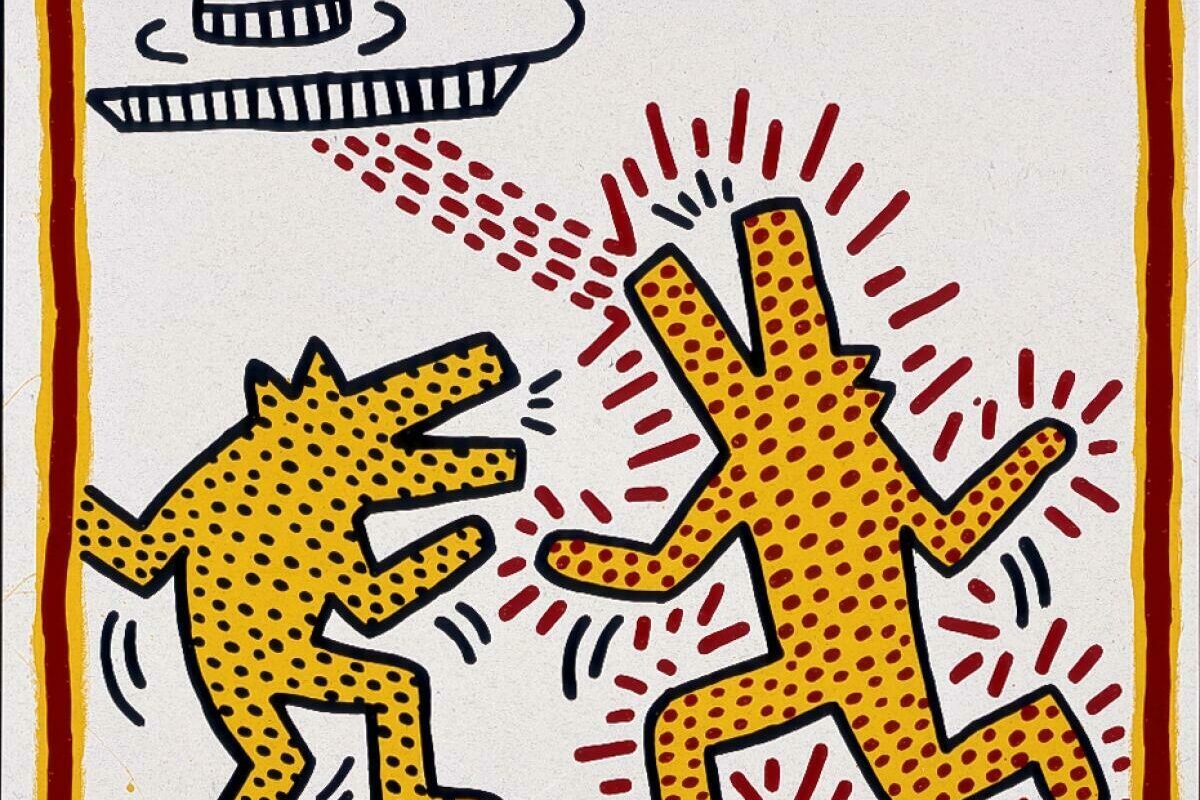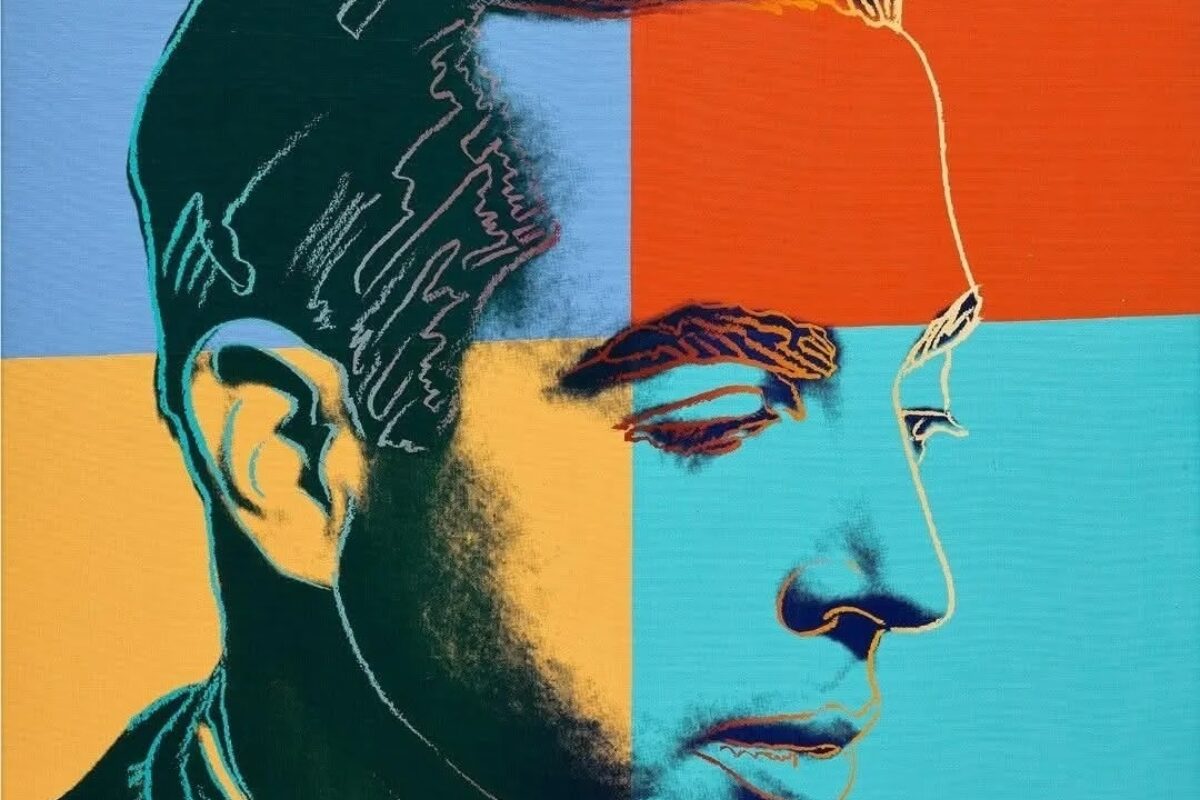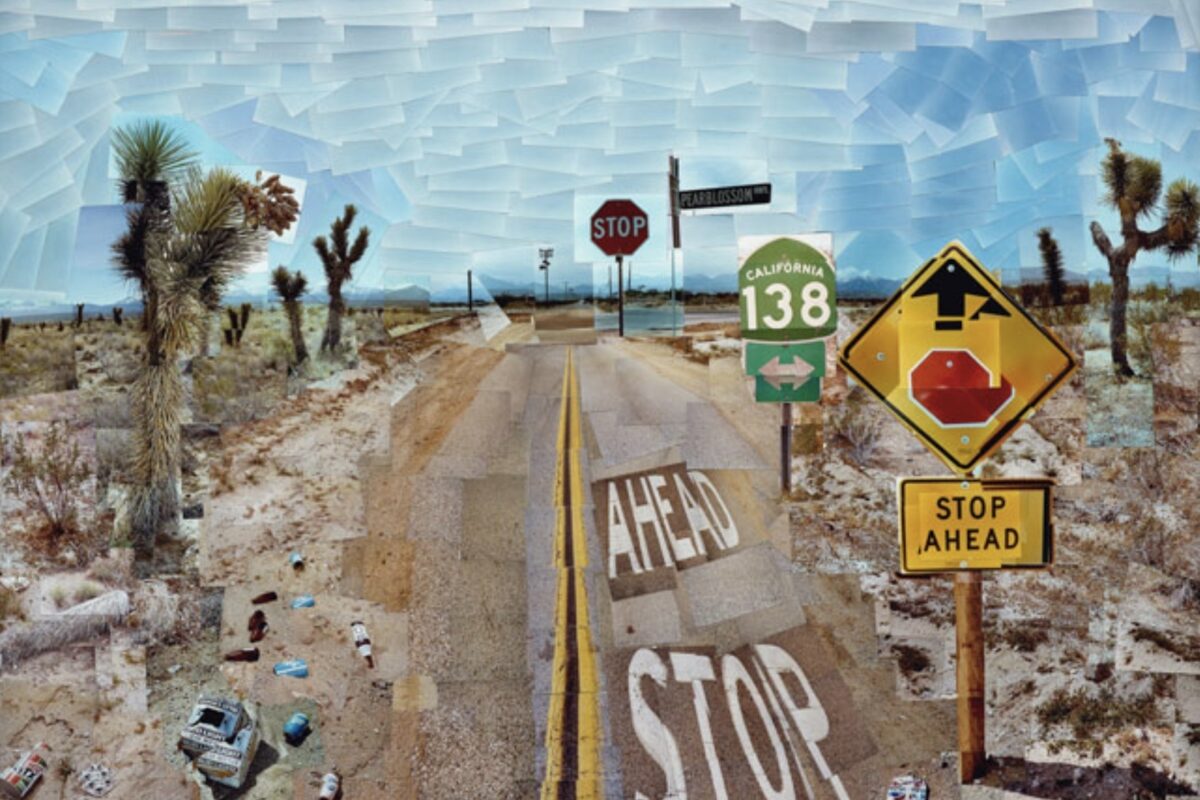For millennia, words and images have coexisted. Contemporary artists continue to use language as a powerful form of expression and biting commentary on current issues, creating text-based art with the same revolutionary and innovative spirit as their 20th century counterparts. In this genre, we highlight eight important figures, including both longstanding influencers and emerging artists who are shaking up the scene.
1950s
Cy Twombly’s most famous works are those that impress the greatest form of rhythm and gesture on the canvas. Working in the 50s during a time that favoured Abstract Expressionism, his work is at once "calligraphic and graffiti-esque", characterised by thinly marked lines on an otherwise blank canvas. The abstracted gestures invoke both primitivism and a modern spatial sensibility which later went on to influence younger artists such as Jean Michel-Basquiat, Anselm Kiefer, and Julian Schnabel.

Untitled (New York City), 1968, was sold for $70,530,000 at Sotheby’s New York in November 2015.
Courtesy of Sotheby's
Ed Ruscha was another figure who became well known in the late 1950s and early 60s when he began making collages and paintings using images and words taken from everyday sources. Widely celebrated for his experimental paintings that incorporate select words and phrases, his distinct style is instantly recognisable and points towards a personal documentation of the changing contemporary culture in the US and the wider Pop Art genre. With Ruscha, his influence is wide-reaching as he continues to work with no signs of slowing down at the age of 80!

Edward Ruscha, Standard Station (1966).
Courtesy of The Museum of Modern Art, New York/Scala, Florence. © Ed Ruscha

Ed Ruscha, Blue Collar Tires (1992).
Courtesy of the Museo Nacional Centro de Arte Reina Sofía, Madrid
1970s
As one of the most important artists of the 70s, Barbara Kruger’s instantly recognisable style and bold text-based art centres around the criticism of mass media and consumerism. Adopting the aesthetics of advertising, she combined commonplace phrases with photographs for immediate impact - a body of work was often politically and socially motivated. Her terse statements question the barrage of everyday images that surround us, inviting us to rethink their role in politics, power, and control. In 1979, Kruger developed her signature style using large-scale black-and-white images overlaid with text.

Installation view of LACMA's Barbara Kruger exhibition: Thinking of You. I Mean Me. I Mean You (2019).
Photograph: Time Out/Michael Juliano
Considered a neo-conceptual artist, Jenny Holzer works in a variety of media that span large-scale public installations, advertising billboards, to illuminated electronic displays. Holzer's first work of public text art was titled 'Truisms', made from 1977-79, which subsequently catapulted the artist into mainstream notoriety. Both of these women have shaped the contemporary art and design zeitgeist, speaking on technology, politics and power with lasting cultural and visual impact.


Image from Holzer's Marquee series, using selected “Truism” and “Survival” texts, NYC.
1990s
Harland Miller started painting book covers while living in Paris during the 1990s. Initially starting with French pulp novels, he later found a box of Penguin books at an English bookshop near Notre Dame and was inspired to recreate their classic covers - a watershed moment for the artist. Re-titling books with phrases connected to his own experiences and commonplace terms are part of Miller’s success. Nostalgia and relatability meld with wit, his clever wordplay dances along the narrow seam between hope and disappointment.

From left to right: Not Giving In To Will Power (2018), I’ve Been Down But This is Ridiculous (2013), Dirty Northern Bastard (2009)
COURTESy: WHITE CUBE. © Harland Miller
Tracey Emin rose to fame in the late 90s with the emergence of the Young British Artists. Whether it's words sewn into a tent, confrontational text on paintings, or brightly coloured neon phrases, her work is often accompanied by sensual, truthful, and forlorn words. Emin’s confessional artwork is the perfect playground for language and her authorial voice is ever present in the work. Autobiographical in nature and blunt in expression, it’s no wonder Emin is widely regarded as a leading figure in the British art scene.

'Everyone I Have Ever Slept With 1963–1995' by Tracey Emin (1995). An exterior view of the work.
2012
Coming onto the scene in 2012 with a stirring fictional story of two American brothers who escaped an infamous cult, it was later revealed that former art dealers Mike Snelle and James Golding were behind the innocuous facade. There’s a fine line between fiction and truth and in the case of The Connor Brothers, this rings true. Playful phrases glitter in front of painted Pulp Fiction backgrounds and the use of cynical, comedic, and self-aware quotes from famous poets have made for some of the most well-known and popular pieces from this duo.
“It is the paradox of art that artifice is often the best way to depict reality, fiction the best way to challenge conventional ideas of what we think of as ‘the truth’.”
Mike Snelle, The Connor Brothers

The Connor Brothers 'I’d Rather A Beautiful Fiction Than An Unremarkable Truth' (2023)
COURTESY: BONHAMS
2017
Tim Fishlock has been tinkering away since 2014 on notable projects in and out of the art world. His practice centres on modern life and our uneasy alliance with social media and technology. Brightly coloured text on bold background swathes is commonplace in Fishlock’s practice. His 2022 solo exhibition 'PARADISE VERSION' at Hang-Up was inspired by music and record-collecting culture with the same cut-up techniques previously seen in his practice. With bags of personality, Fishlock’s work is certainly not to be missed.
2022
Known for his deadpan humour and witty nihilism, David Shrigley is one of the most well known artists working today. Having achieved cult status in 1995 (even gracing a Frieze cover: Issue 25), Shrigley’s scribbles are still as relatable today. Nowadays his culturally ubiquitous work decorates anything from fine-dining restaurants and stationary, to wine bottles. Hang-Up held a hugely successful Shrigley exhibition in 2022 that proved Shrigley's irreverent observations are still attuned to the modern zeitgeist. Fusing comically drawn figures quipped with short lines of text, the casual delivery of his work belies a sharp wit that cuts through the absurdities of contemporary life.

Installation view of Hang-Up's 'David Shrigley: Mainly Multiples, Some Paintings & Other Stuff Too'
Photograph: Simon Kallas
Want to add to your collection?
More editorials about David Shrigley
Artists
Decoded: David Shrigley
8 Jul 2025 | 2 min read

Artists
Our Top Exhibitions of 2023
21 Dec 2023 | 5 min read
Artists
Iconic Shrigley Sculpture 'Really Good' Makes Its Way to Australia
1 Sep 2023 | 3 min read
Artists
Food Meets Art
7 Aug 2023 | 4 min read
Artists
All Things Bright and Beautiful
10 May 2023 | 3 min read
Artists
Text Art: A Brief Timeline
20 Apr 2023 | 4 min read
Lifestyle
Hang-Up's Highlights of 2022
15 Dec 2022
Exhibitions
David Shrigley: Mainly Multiples, Some Paintings & Other Stuff Too | A look at the private view
22 Nov 2022
Artists
Four Reasons to Buy David Shrigley
21 Nov 2022
More from Artists
Artists
The Diverse Techniques of Yayoi Kusama
21 Aug 2025 | 2 min read

Artists
Haring Decoded: The Symbolism of His Iconic Dog
12 Aug 2025 | 2 min read

Artists
Happy Birthday Andy Warhol, The King of Pop Art
6 Aug 2025

Artists
The Psychology of Kusama
14 Jul 2025 | 3 min read

Artists
From Rothko to Ruscha: Unpacking Harland Miller’s Influences
10 Jul 2025 | 3 min read

Artists
Decoded: David Shrigley
8 Jul 2025 | 2 min read

Artists
Is David Hockney the Most Important Living Artist?
2 Jul 2025

Artists
Top 10 Selling Warhol Sets
15 Jun 2025 | 2 min read

Artists
David Hockney | 5 Groundbreaking Moments
23 Apr 2025 | 3 min read







